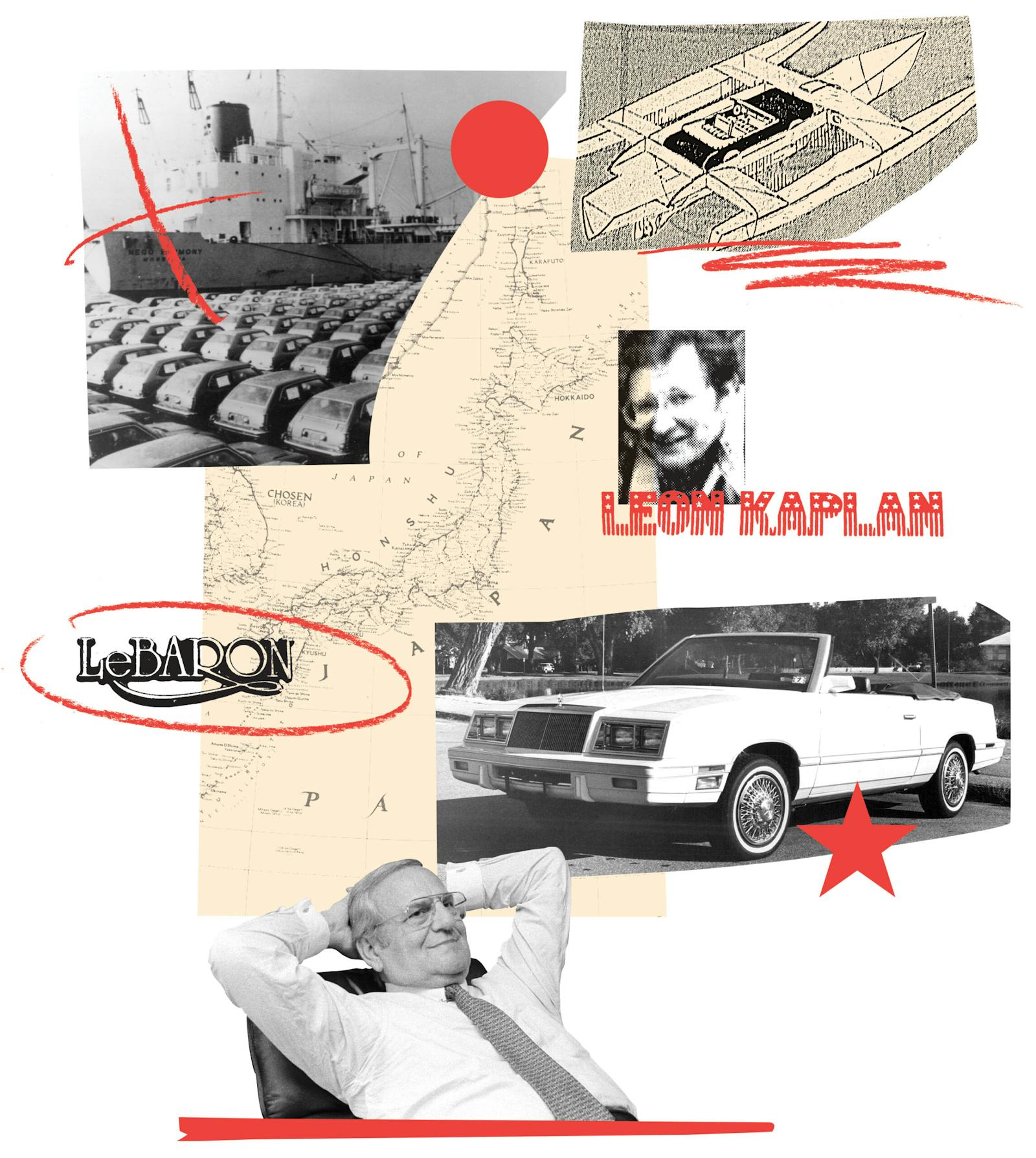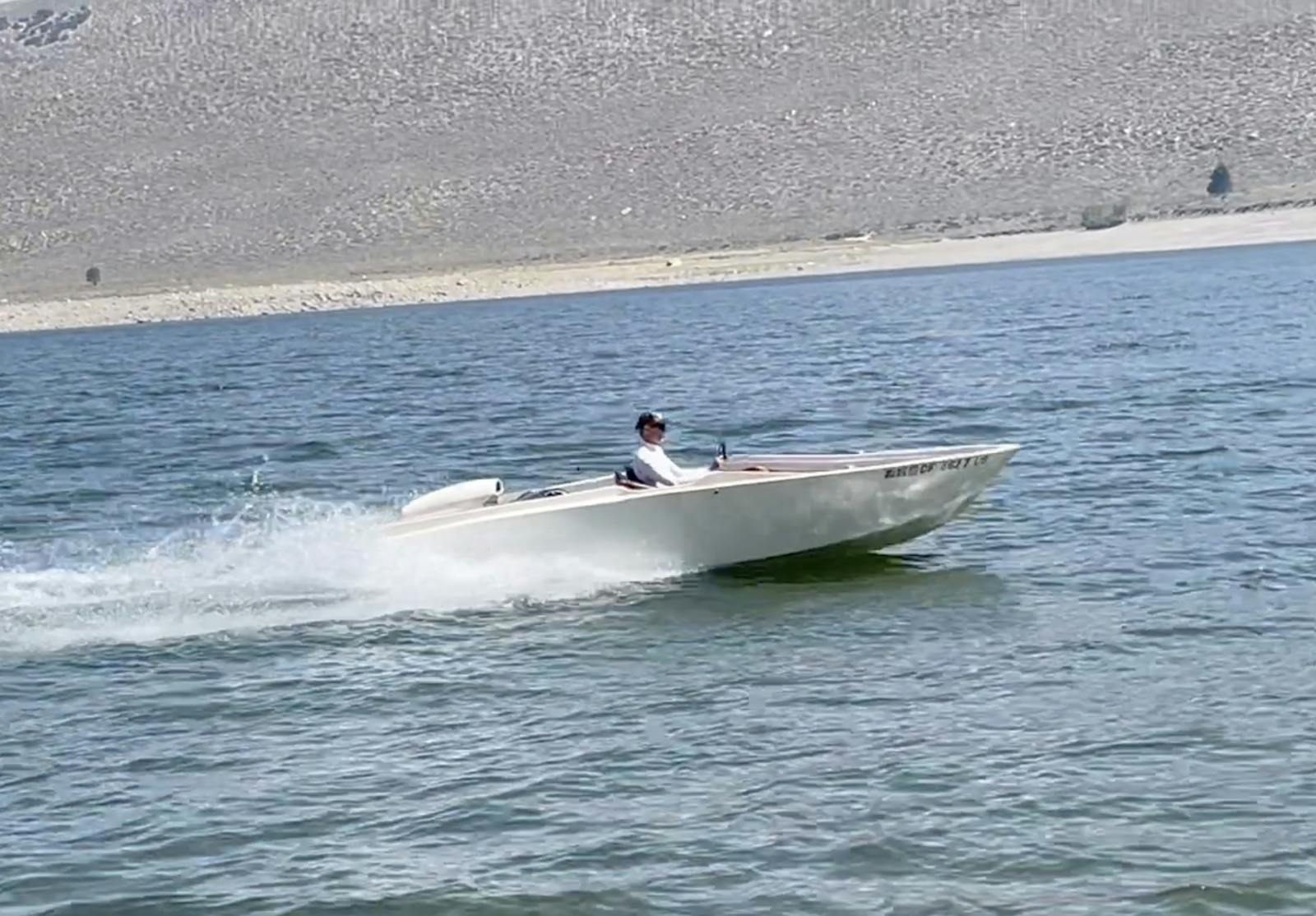Media | Articles
The Chris-Craft Cobra was built to turn heads
Boaters’ heads turn whenever a Chris-Craft Cobra passes by—whether on water or land. So too do others’ who simply appreciate fine quality and sleek design. Taking it all in, the common reaction is “Boy, would I love a boat like that!”
The first three things catching your eyes are the huge, gold fiberglass tail fin, the fine varnished wood and, finally, the alligator pattered cockpit trim. Starting with a proud “bull nose” bow and smoothly tapering to an extremely low transom easily shifts one’s perception from ‘boat’ to ‘sculpture’.
Imagine the Chris-Craft family’s conversations and strategizing during the Cobra’s pre-production planning stages. With only a single row of seating (rare except on race boats) this boat design was clearly impractical. Adding a fiberglass fin and high-end wood and vinyl finishes made it exotic. For Chris-Craft it was definitely a risky venture. Yet Chevrolet succeeded with the Corvette, which was also exotic and impractical. And they won press and showroom attention as a result of their bet.
Like Chevy, Chris-Craft created a halo-vehicle for its industry. At each major boat show, Chris-Craft wanted women remembering it, kids stopping in awe and men absolutely needing it. Other Chris-Craft models’ profit would cover any Cobra production losses.
A.W. Mackerer led his team within Chris-Craft on the Cobra’s naval architecture. They already had a successful Mackerer hull that ran exceptionally well for their ‘sports-car’ boat. But that Racing Runabout’s design had run its course soon after the post-WWII era. For the mid-‘50s, sales required forward-looking styling.
Marketplace
Buy and sell classics with confidence
Mackerer’s team collected design ideas and styling cues from Don Mortrude, a Chris-Craft freelance industrial designer. Writer Jack Savage says Mortrude was responsible for the blond king plank on some decks, as well as the bull-nose bow shape that no wooden boat builder would even conceive, as fashioning it inside a production boat plant would be so difficult. Savage says the Cobra tail fin also resulted from Mortrude’s work.
So, Chris-Craft added new styling to the deck and hull design above the water line. The boat grew as a result of the restyling: The 21′ Cobra is 8” wider and 23” longer than the 19′ Racing Runabout, although both share a common hull. They then added either a big block Cadillac or Chrysler Hemi V-8. It was one fast classic boat!
As an aside, the 18′ Cobra is built on a different hull and is 17′ 8” by 6′ 2” and was only available with a six-cylinder engine. This results in a 600-pound weight savings over the 21′ Cobra.
Now, let’s consider the two Cobra models’ sales:
- The Racing Runabout was a success in the number of units sold (503) and the number of model years it was offered (1948-1954).
- Only 55 of the 21′ Cobra were sold along with 51 of the 18′ Cobra. Both production runs ended within a year.
Why? Some say it was the price. Others think the Cobra was too different. Some believe Chris-Craft limited the number of Cobras built due to costs that had to be absorbed by the profits from Chris-Craft’s regular production run. Once they reached break-even on the Cobra models they stopped.
And it may have been a design issue. Cobras only had one bench seat; the Racing Runabout had two benches in two cockpits. The 21′ Cobra will seat four across while the 18′ seats three in one row.
A few Chris-Craft Cobras (17-18 units?) topped the engine choices with a powerful 285 horsepower Cadillac Crusader from Detroit car dealer Cal Connell. Hemi engines powered 21 boats. Only 10 of the 55 boats built had Chris-Craft 6-cylinder (158HP) engines in them. Seven boats were shipped new by Chris-Craft without an engine.
Pictured here is the top Chris-Craft Cobra. But both the 21′ and the 18′ stop people in their tracks. They are FAST boats but somewhat impractical except at a classic boat show. If you spot one, try befriending its owner and get a ride! You won’t regret it.
20170725114158)

